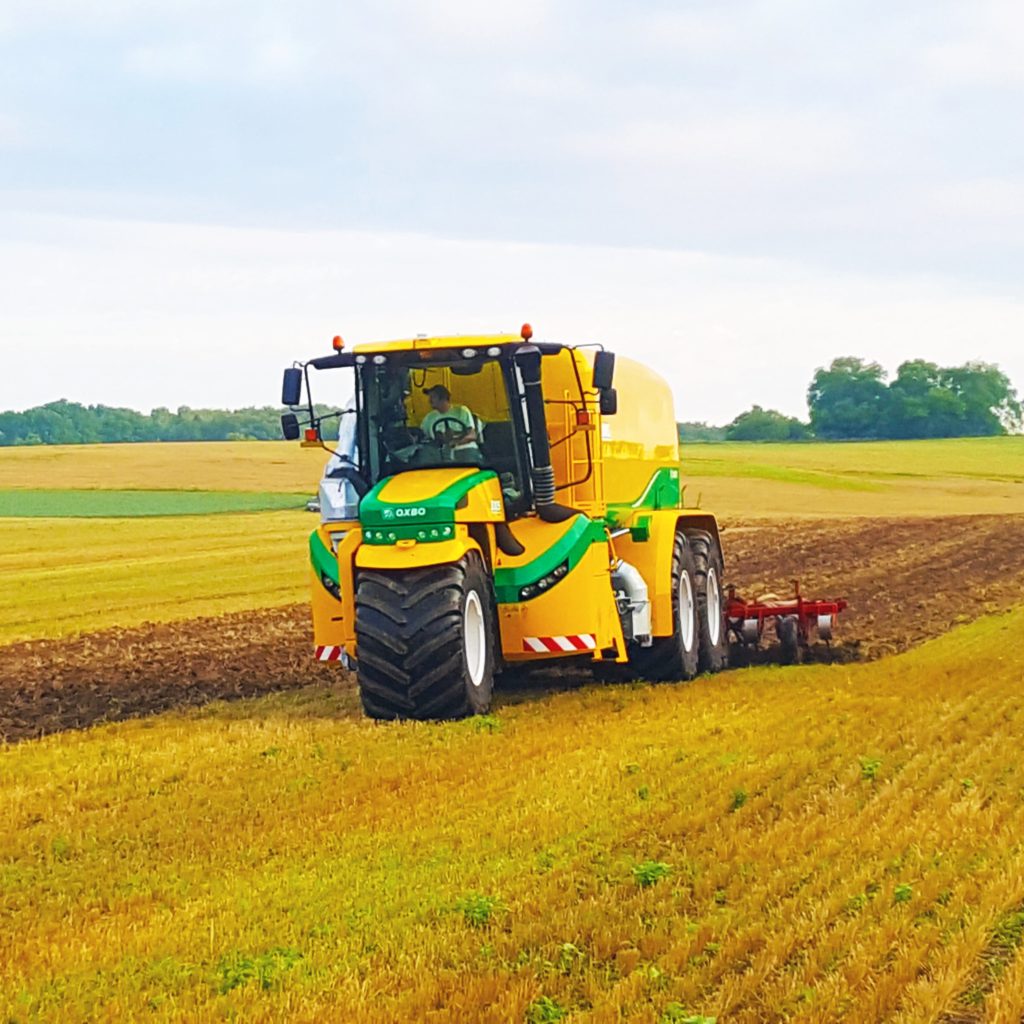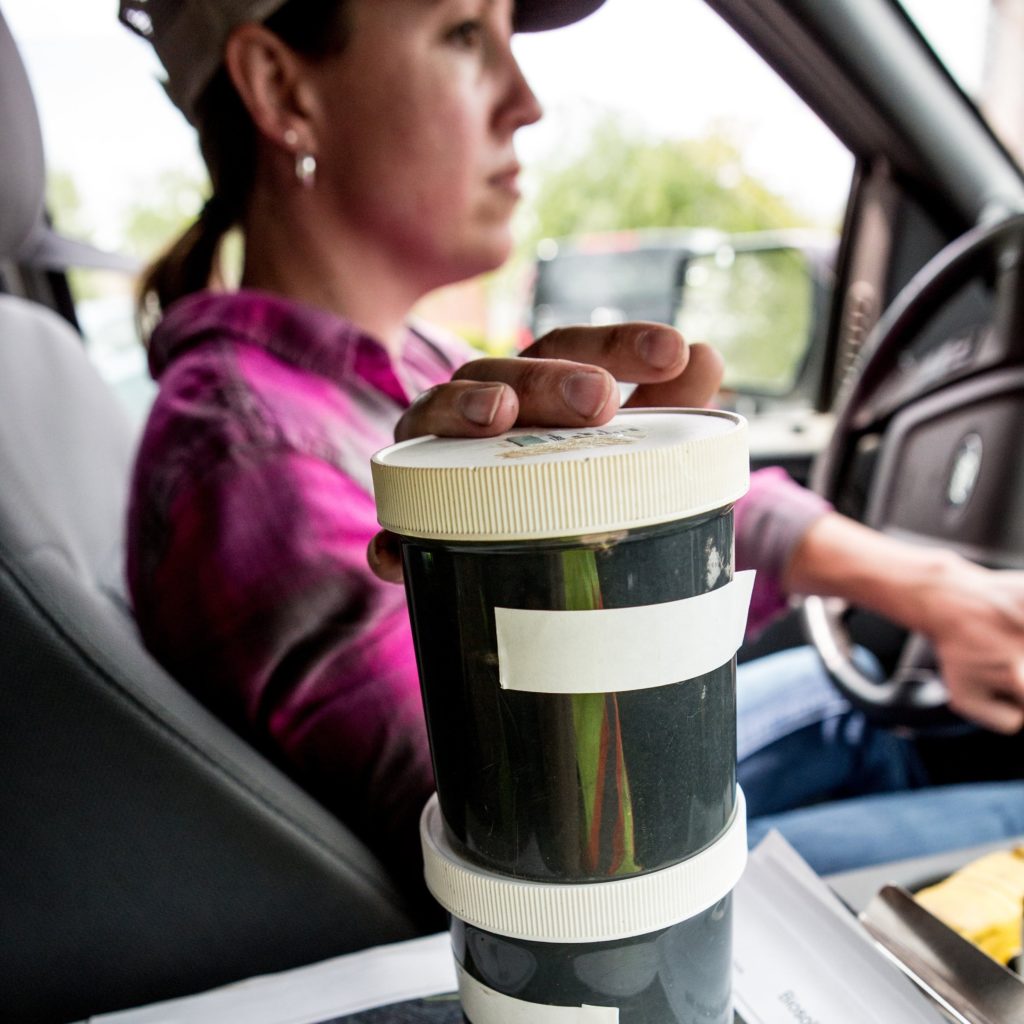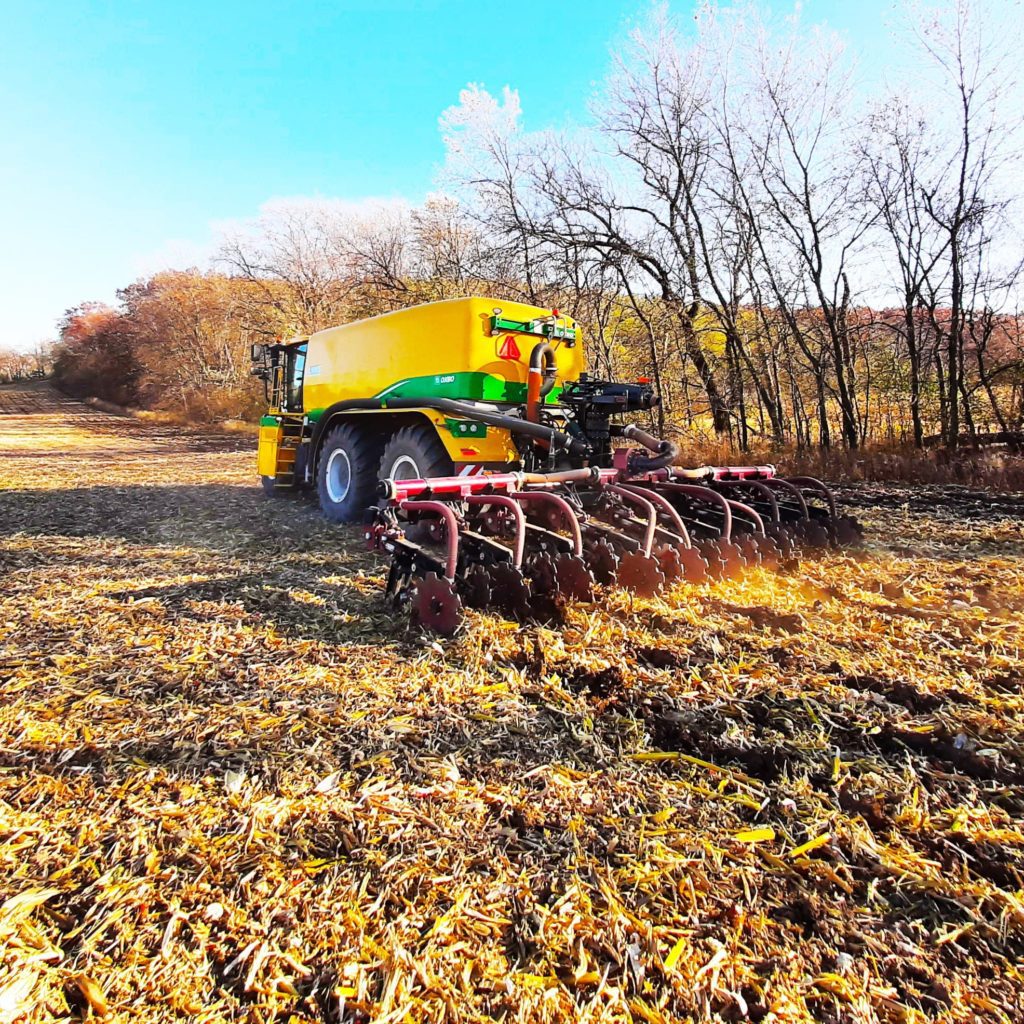
In Dane County and across Wisconsin, we love our lakes, rivers and streams. But through the years, phosphorus has impacted our waterways, in some cases turning them green, smelly and unenjoyable. To turn the tide and reclaim our waters, the District, along with a number of organizations and agencies, has made commitments and taken action to reduce phosphorus in local waterways, which will help improve water quality.
Two of the most significant and outward-facing commitments the District has made to reduce phosphorus are our investment in the Ostara system and our leadership in Yahara WINS. But there are several other past, present and future changes in our Metrogro program that haven’t received the same recognition as WINS and struvite harvesting for their contributions to phosphorus reduction. Here’s the scoop on the impact Metrogro has already had on reducing phosphorus and future efforts.
Setting the stage
Phosphorus is essential for plant life, but too much in our water can promote excessive algae growth and starve fish and aquatic plants of oxygen. It is estimated that one pound of phosphorus can create up to 500 pounds of algae. The District’s permit limits how much phosphorus we can discharge to Badfish Creek. Because adding treatment to remove phosphorus from the 92% of our effluent that goes to Badfish Creek is cost-prohibitive, the District led the effort to utilize adaptive management, a collaborative watershed approach to phosphorus reduction. Yahara WINS, now in its sixth year of a 20-year program, has kept hundreds of thousands of pounds on the land and out of local waterways to date.
(The District is currently assessing phosphorus compliance options for Badger Mill Creek, which will have the same phosphorus limit as Badfish Creek. Badger Mill Creek receives only 8% of the District’s effluent. To learn more about Project PLUS, our work to examine compliance options at Badger Mill Creek, click here.)
The land plays a crucial role in phosphorus reduction, both curbing the amount applied and undertaking actions to keep this vital plant nutrient on the land. In this respect, Metrogro is an important partner in the District’s phosphorus reduction efforts and aids in the goals of Yahara WINS.
Early process changes and research efforts

Small changes can have significant impacts, and some of Metrogro’s phosphorus efforts reflect just that.
One of the first changes, which the District made as the state began working on phosphorus regulations, was spacing out biosolids applications to every three years to avoid phosphorus build-up in the soil. If there is more phosphorus in the soil than plants can use, it can leach out in runoff.
Another early action was to remove fields with phosphorus concentration levels of 200 parts per million (ppm) and higher from the Metrogro program. Phosphorus loss from fields with excessively high (more than 75 ppm) phosphorus soil test levels contribute significantly more phosphorus through one ton of soil loss compared to fields in the optimum (25 ppm) to high (35 ppm) level for soil test phosphorus. The level of 200 ppm was chosen as a threshold as concentrated animal feeding operations cannot apply manure to fields with soil tests at this level.
In 2018, the District partnered with Wisconsin Lutheran College to verify the phosphorus availability of the various biosolids products we produce, including Metrogro Class B liquid (our primary Metrogro product), Class A cake and compost. The research verified that, thanks to our biological phosphorus removal process, nearly 100% of the phosphorus in our biosolids is available within the first cropping year following application.
Phosphorus availability information was needed to determine the resulting phosphorus loss from a biosolids application to use the Phosphorus Index (P Index), a planning and assessment tool for managing phosphorus runoff from cropland and pastures. The P Index is one of two phosphorus management strategies available to meet Wisconsin’s Nutrient Management Planning Standard. With data for our biosolids, partners that work with farmers through Yahara WINS report the pounds of phosphorus reduced by calculating the P Index using the SnapPlus software.
Equipment innovation
The bright yellow Oxbo applicators at the District’s Vehicle Loading Building (VLB) visually demonstrate our commitment to finding better tools for the job, but they are only part of the story. While the Oxbo holds Metrogro product for distribution on a field, it’s the injector bar that does the heavy lifting, and Metrogro staff spent several years researching and trialing equipment that would allow the District to embrace low disturbance manure injection (LDMI) as a way to land apply our Class B liquid biosolids.
LDMI is a more ecologically friendly way of contributing nutrients to agricultural lands. With LDMI, manure is injected below the soil surface with minimal soil disturbance, which helps prevent phosphorus runoff, facilitate nutrient uptake, and reduce odors.
The first effort to find an LDMI implement that would meet our needs and accommodate our product began in 2017. That year, staff trialed one implement, and Metrogro mechanics also tried retrofitting an applicator. Unfortunately, neither effort met our needs.
In 2018, Metrogro staff attended the North American Manure Expo in South Dakota, where they identified other injectors worth trying, but none panned out. Over the next year, Metrogro staff trialed two other implements, but again, no match.
The District struck gold when Brad Arnold, one of our Metrogro mechanics, attended a field demonstration for a Zimmerman Red Viper injector. This product injected the material under the surface and had all the features we sought. The District now has three of these implements. The farmers have been happy with this change, with a few farmers rolling the fields soon after application, allowing for no-till planting. This is another beneficial action for keeping phosphorus where it belongs, on the land.
Next step: Improved products

The District conducted a biosolids study from 2019-2021, rating products based on four categories: economics, operations, environment, and customers. The environmental piece focused on nutrient management and runoff reduction opportunities (as well as greenhouse gas emissions, energy use and resilience to emerging contaminants).
In September 2021, after the biosolids study was completed, Yahara WINS, Metrogro and UW-Madison joined forces on an in-field partnership that focused on a number of factors of interest to Yahara Pride Farms, a strong WINS collaborator, and others. From a phosphorus perspective, those factors included how different compost mixtures changed soil test phosphorus levels and an assessment of potential water-soluble phosphorus losses from different compost mixtures. The first trial was harvested in early November, and the UW will be providing a research summary of the results in the coming months.
In addition, biosolids specialist Zac Thompson is in the beginning phases of Class A research for the District; this includes developing a research plan and acquiring land from a grower for testing. Once the final products to trial are identified, the hope is to run field trials in the fall of 2023 and continue testing for three years to investigate soil health, nutrient availability, nutrient uptake, nutrient removal and crop yield.
When the trials and testing are complete, the District hopes to have a better understanding of the environmental, economical and agronomical effect of each product and how they could benefit standard cropping practices while maintaining nutrient management plan compliance and reducing phosphorus runoff potential.
“We’ve just begun to assess the products to test in field trials and continue to focus on the nutrient management aspects of each product,” says Zac. “For me, that’s got to be top of the list. We need to see, agronomically, how these products work, the benefits of each system, and how to apply each. We want to do the best we can for the environment while, at the same time, producing a product that is beneficial.”
Thank you to communications and public affairs director Amanda Wegner for compiling this article, with support from biosolids specialist Zac Thompson, watershed programs coordinator Kim Meyer and Metrogro operations supervisor Ross Hollfelder. For more information on District initiatives, visit our blog or follow us on our social media channels @MadMetroSewer.






